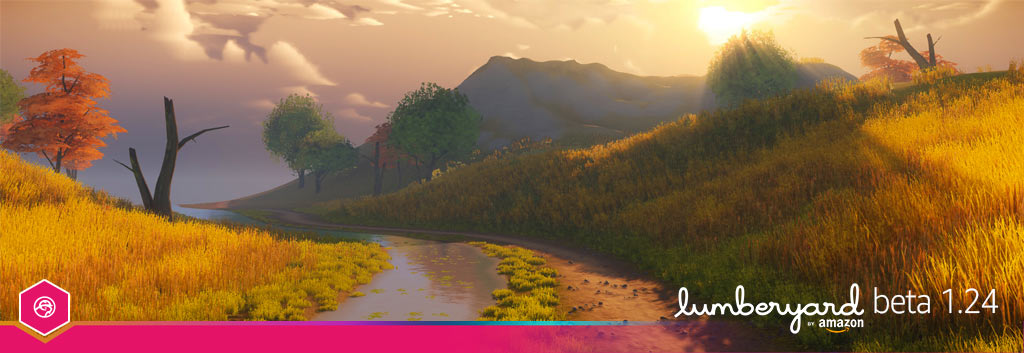AWS for Games Blog
Chock full of improvements, Lumberyard Beta 1.24.0.0 now brings you updates to Script Canvas, PhysX, the core editor, and more

Spring has sprung, and it’s time for a fresh release of Amazon Lumberyard beta! We’re very pleased to bring you version 1.24.0.0, which contains many improvements to the Lumberyard engine and tools, particularly around quality of life with Script Canvas, the core editor, and asset bundling.
We’ve delivered a set of new Gems – EditorPythonBindings and QtForPython(PySide2). Using their exposed python bindings, the gems unlock access to build scalable multi-point, scriptable, end-to-end, round-trip pipelines, and common framework solutions for game content creators. This reduces the barrier of entry for building out new custom workflows, increases efficiency via automation by allowing hands-free content processing, and allows authoring test-automation workflows to monitor and improve quality of your projects.
Animators, we’re excited to bring you a fix that you’ve been asking for: saving an anim graph will no longer reset the view to the root state machine. Anim graphs are now saved and loaded directly to and from the source asset folder. Additionally, we’ve made 11 other quality of life improvements to EmotionFX, including 8x faster processing of actor assets.
This release includes a top customer request to stabilize entity IDs during slice operations. Before 1.24, saving or modifying slices would regenerate entity IDs causing references to entities from scripts or components to become lost. Slice operations no longer generate new entity IDs. The Entity Inspector now displays entity IDs of a selected entity and entity IDs can be searched for using the Entity Outliner search box.
Lumberyard version 1.24 includes multiple PhysX gem and physics feature enhancements . We’ve accelerated scene queries like ray casts, overlaps and shape casts with multi-threading. We’ve made improvements for automatic primitive collider fitting, and changed how triangle meshes decompose. On the simulation side, we’ve added a notification that allows for custom logic when the physics simulation world is created. A static rigid body now exists as its own component, eliminating the recurring need to check if an instance of a collider has a static rigid body. Lastly, cloth simulation is improved to support consoles, mobile and Mac, bringing the joy of fabric life to small and large screen alike.
We’ve added numerous improvements to Script Canvas, including a new math expression node. The new Math Expression node lets you type in a simple math expression and evaluate it. This eliminates the need to string together a bunch of math operator nodes in order to form a full equation. Among the other improvements, any data pin can be converted to a variable reference by dragging a variable from the Variable Manager directly onto the pin.
Version 1.24 adds a source asset relocation feature which you can now use this to safely move or delete source assets from a project. It will notify you of any dependencies that will break and has an option to attempt an automatic fix-up of references to moved files.
Lumberyard 1.24 also adds support for Visual Studio 2019. The minimum version required for development is 16.2.4. You can use the Lumberyard Setup Assistant to configure support for Visual Studio 2019, Visual Studio 2017, or both versions.
You can read the full release notes here.
To help you get started and learn more about Lumberyard, we’re continually making updates to our tutorials. You can find them on YouTube, or on the Lumberyard Tutorials page!
You can also find Lumberyard on GitHub. Full source is available there, as well as the ability to contribute back to Lumberyard.
As we continue to improve Lumberyard, we want to thank everyone in our community whose suggestions help us make a better product every release. Keep sending feedback to our forums and to lumberyard-feedback@amazon.com! For the latest Lumberyard updates, follow us on Twitter, Facebook, and our blog.